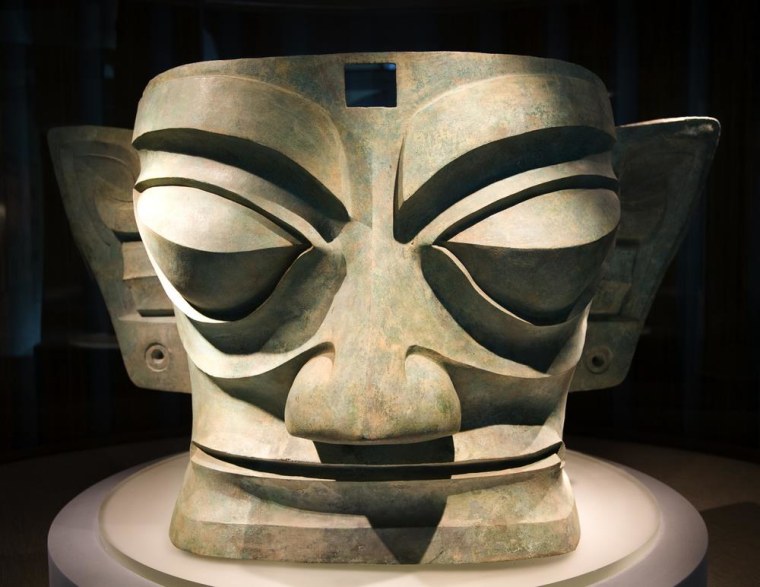An earthquake nearly 3,000 years ago may be the culprit in the mysterious disappearance of one of China's ancient civilizations, new research suggests.
The massive temblor may have caused catastrophic landslides, damming up the Sanxingdui culture's main water source and diverting it to a new location.
That, in turn, may have spurred the ancient Chinese culture to move closer to the new river flow, study co-author Niannian Fan, a river sciences researcher at Tsinghua University in Chengdu, China, said Dec. 18 at the 47th annual meeting of the American Geophysical Union in San Francisco. [Ancient Chinese Warriors Protect Secret Tomb]

In 1929, a peasant in Sichuan province uncovered jade and stone artifacts while repairing a sewage ditch located about 24 miles (40 kilometers) from Chengdu. But their significance wasn't understood until 1986, when archaeologists unearthed two pits of Bronze Age treasures, such as jades, about 100 elephant tusks and stunning 8-feet-high (2.4 meters) bronze sculptures that suggest an impressive technical ability that was present nowhere else in the world at the time, said Peter Keller, a geologist and president of the Bowers Museum in Santa Ana, California, which is currently hosting an exhibit of some of these treasures.
The treasures, which had been broken and buried as if they were sacrificed, came from a lost civilization, now known as the Sanxingdui, a walled city on the banks of the Minjiang River.
Archaeologists now believe that the culture willfully dismantled itself sometime between 3,000 and 2,800 years ago, Fan said.
"The current explanations for why it disappeared are war and flood, but both are not very convincing," Fan told Live Science.
— Tia Ghose, Live Science
This is a abbreviated version of a report from Live Science. Read the full report. Follow Tia Ghose on Twitter and Google+. Follow LiveScience @livescience, Facebook & Google+.